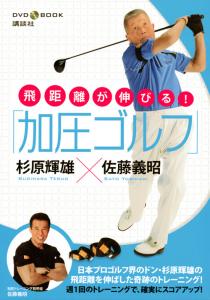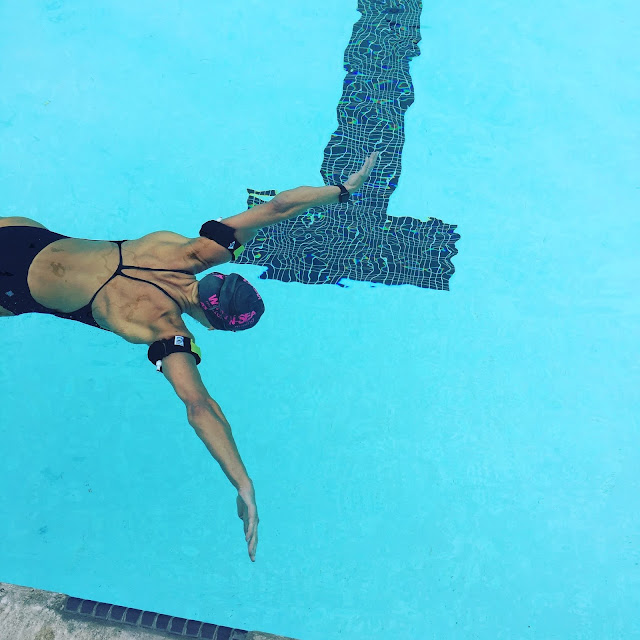For what? Rehabilitation, recovery, functional movement, strength, flexibility, mobility, stress relief, KAATSU At Home



A 76-year-old woman in Southern California was looking to maintain her health.
Her use of KAATSU, the original BFR, very pleasantly surprised her and her family.
She started doing KAATSU Cycles on her arms and legs twice a day on her new KAATSU Cycle 2.0 unit while doing stretching and the standard KAATSU 3-Point Exercises (see here for arms and here for legs).
"Not only did she see a nice visual improvement in her overall muscle tone [see top photo above], but she also realized a significant decrease in her triglyceride levels* from 327 to 144," observed Steven Munatones.
"She achieved these results without changing her diet or changing the amount or intensity of exercise she normally did over a 2-month period. But what she did new was simply do KAATSU Cycles on her arms and legs twice a day on a KAATSU Cycle 2.0 unit while doing stretching and the standard KAATSU 3-Point Exercises in the comfort and convenience of her home (see here for arms and here for legs)."
 KAATU inventor Dr. Yoshiaki Sato has long seen these kinds of results with his older patients in Tokyo, Japan.
KAATU inventor Dr. Yoshiaki Sato has long seen these kinds of results with his older patients in Tokyo, Japan. One of his early studies on the effects of KAATSU was published in 2000 in the Journal of Applied Physiology (titled Effects of resistance exercise combined with moderate vascular occlusion on muscular function in humans).
Background
KAATSU inventor Dr. Sato discovered throughout the 1970s, 1980s and 1990s that KAATSU is extremely effective for training of everyone from elite athletes to older people facing sarcopenia.
During the 1980s, his Japanese clients and athletes started to incorporate this new training and rehabilitation modality, but it took until the mid-1990's before Dr. Sato found an inquisitive collaborator in Professor Naokata Ishii of the University of Tokyo (Department of Life Sciences) began to conduct formal research studies on KAATSU.
Their first major peer-review paper was published in the Journal of Applied Physiology.
 KAATSU Vernacular
KAATSU VernacularThe results were not surprising to Dr. Sato, but Professor Ishii knew that the findings were difficult for the journal editors to accept because the word "KAATSU" was unknown in the research and sports world outside of Japan. After discussions with the journal editors, KAATSU was described in the literature as vascular occlusion - even though Dr. Sato and Professor Ishii wanted to steer away from the word occlusion.
They know there is no arterial limb occlusion of the brachial artery and brachial veins even at high pressures with the pneumatic KAATSU Air Bands. The ultrasound image on left shows the brachial artery and brachial veins at 300 SKU (mmHg) of a 21-year-old collegiate athlete.
Study and Findings
24 women (ages 47-67 years) did a 16-week training program (3 sets of single-arm dumbbell curls in the sitting position with non-dominant arm and a 1-minute rest between sets, performed twice per week) comparing KAATSU exercise (at 110 SKU pressure) with low-intensity exercise without KAATSU and high-to-medium intensity exercise without KAATSU.
Percent changes in cross-sectional area and isokinetic strength were compared: the KAATSU Group increased more than the low-intensity non-KAATSU Group and were similar to the high-intensity non-KAATSU Group.
Before and after exercise, arterial blood flow and plasma lactate concentration were measured; during exercise, the electromyographic activity of the biceps muscle was recorded. The average SKU (mmHg) pressure was 110.
GH concentration, electrical activity in the working muscles, muscular hypertrophy (in both the biceps and triceps), muscular strength, and number of muscle fibers recruited increased with the KAATSU Group as it did with the high-intensity non-KAATSU Group.
Implications for the Elderly Population and Competitive Athletes
The increase in muscle fiber recruitment with KAATSU has implications for elite athletes and older people. The moderation of blood circulation and the hypoxia and acidic intramuscular environment also leads to additional motor-unit recruitment.

For example, repeated KAATSU without any exercise during bed rest effectively prevents muscle atrophy.
Furthermore, when the leg muscles of older people gradually weaken, the inability to stand up and walk increase and serious problems with falling occur. Although resistance exercise can improve muscular strength and size and bone mineral density, KAATSU presents the opportunity to achieve their beneficial results without large mechanical stress. Additionally, when KAATSU is applied with simple resistance exercise, an increase in energy consumption is also seen.
For competitive athletes undergoing a season-long vigorous training program, recovery days or less-than-highly-intense training days are built into their training regimen.
For these athletes, they can train as normal during their intense workouts during hard sessions, but also with the increase of muscle fiber recruitment with KAATSU on their recovery days, the athletes are effectively training vigorously every session with the usual fatigue and muscle soreness than comes with intense sustained exercise.
* A high triglyceride level combined with high LDL (bad) cholesterol or low HDL (good) cholesterol is linked with fatty buildups within the artery walls, which increases the risk of heart attack and stroke. The 76-year-old woman's triglyceride level fell over an 8-week period from 327 mg/dL (high) to 144 mg/dL (normal).
Normal levels of triglycerides is less than 150 mg/dL
Borderline high is 150 to 199 mg/dL
High is 200 to 499 mg/dL
Very high is 500 mg/dL or above
Copyright © 2014 - 2020 by KAATSU Global























